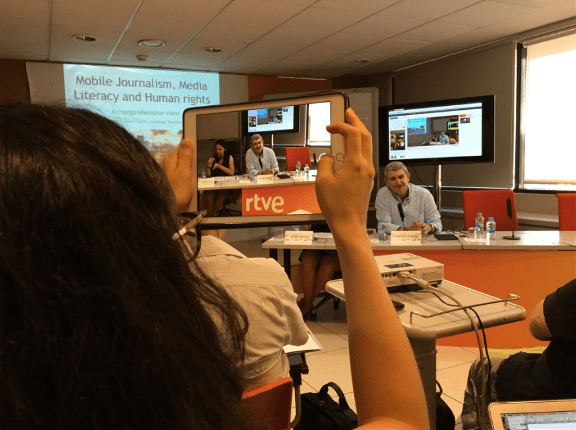Overview of existing practices and curricula in Mobile Journalism (MoJo) training
Categories: English, Text, Y-NEX blog
Zagreb – The audience is going mobile and so is journalism. Mobile phones have been changing the way we live, look for and receive information. Mobile technology has had a profound effect on the way journalists do their jobs, but not only that – it has also changed journalism itself and what it means to be a journalist nowadays – in the way we gather, produce and share content with our audiences. The rise in smartphone users and the shift in the way they look for and consume information has been pushing the media organisations and journalists to think mobile first.
Mobile journalism is a new form of newsgathering and making news and one of the most recent innovations in reporting and publishing multimedia to mobile audiences. It includes micro-blogging, the use of social media, shooting and editing videos, taking photos and live reporting from the field.
The research focused on the existing practices and curriculums in the field of MoJo training in the partner countries that work together on this project – Belgium (Flanders), Croatia, Ireland and Spain – but also looked at other examples of good practices and examples of MoJo training in other countries.
Several common points have been detected in all the partner countries:
- MoJo training is almost never a separate module in higher education, it is more often a part of a curricula that examine journalism and multimedia from a wider perspective, more often in academic than in practical sense
- If organised, MoJo training in higher education is provided as part of a workshop in cooperation with MoJo trainers from media and news organisations. It is almost exclusively focused on the technological aspect of doing MoJo
- There is no curriculum in higher education which would cover the practical aspect of doing MoJo, but also take it to a higher level and examine the different aspects of MoJo storytelling or the needs and changes in the ways audiences consume information on smartphones. No curriculum incorporates what MoJo may mean in the context of citizen journalism, reshaping and democratization of society or how it may affect or change journalistic standards. All these topics and issues are touched in different curricula, but there is not a curriculum which would examine them in-depth and include them in the practical MoJo training.
- The workshops and MoJo trainings provided by other institutions, most often media organisations that organise in-house trainings, are focused on the technological and practical side of doing MoJo
We haven’t found a curriculum which is dedicated exclusively to Mobile Journalism training and which would cover not only the technological aspect of this form of newsgathering and reporting, but also that would examine and teach in-depth:
- MoJo storytelling techniques,
- Different MoJo formats and developing genres,
- The emphasis on journalistic standards and values,
- MoJo and social media,
- Ways to use the potential of MoJo and constant technological development and in the same time keep and develop further good journalistic standards,
- Understanding the wider implications MoJo may have on society, democracy and participation (citizen journalism included)
There is significant potential to develop a MoJo curriculum which would be unique in terms of greater understanding of the mobile-first approach in journalism – both in the terms of production and consumption – what it means for journalists, for audiences and for society as a whole; but also teaching the practical aspect of MoJo and providing training of highest quality, using the latest technology and its potential for doing good (or better) journalism. A balanced and comprehensive MoJo curriculum is needed to fully prepare young journalists for their careers and this project is able to develop exactly that.
